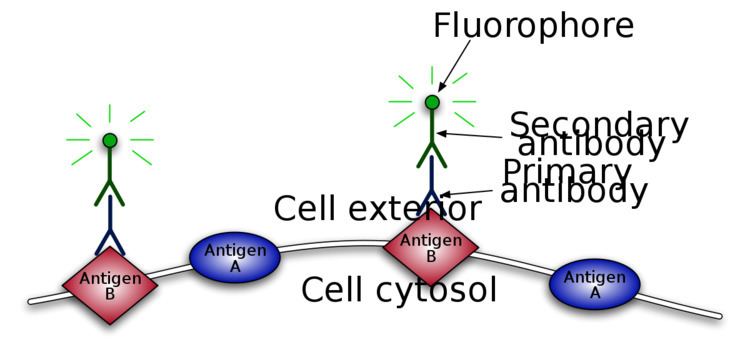 | ||
Primary and secondary antibodies are two groups of antibodies that are classified based on whether they bind to antigens or proteins directly or target another (primary) antibody that, in turn, is bound to an antigen or protein.
Contents
Primary
A primary antibody can be very useful for the detection of biomarkers for diseases such as cancer, diabetes, Parkinson’s and Alzheimer’s disease and they are used for the study of ADME and multi-drug resistance (MDR) of therapeutic agents.
Secondary
Secondary antibody is especially efficient in immunolabeling. In immunolabeling, the primary antibody's Fab domain binds to an antigen and exposes its Fc domain to secondary antibody. Then, the secondary antibody's Fab domain binds to the primary antibody's Fc domain. Since the Fc domain is constant within the same animal class, only one type of secondary antibody is required to bind to many types of primary antibodies. This reduces the cost by labeling only one type of secondary antibody, rather than labeling various types of primary antibodies.
Applications
Secondary antibodies are used in many biochemical assays including:
